A splash of red here, a dab of white there, some fine lines in black, followed by a sweep of blue…. At the end of two-and-a-half hours, the watercolours on the white paper take on the shape of the heritage building of P Orr and Sons in Chennai. A work in pen and ink focusses on the clock tower; a sketch in pencil maps the façade of the iconic building; a pen work details the Indo-Saracanic and Byzantine features of the architecture.
Mapping the city
“Each work has a different perspective, a new take on the same structure. We map the city, sketch by sketch. That’s why we are called Urban Sketchers (USk),” says Namita Ravichandran, a graphic designer and member of the Chennai chapter.
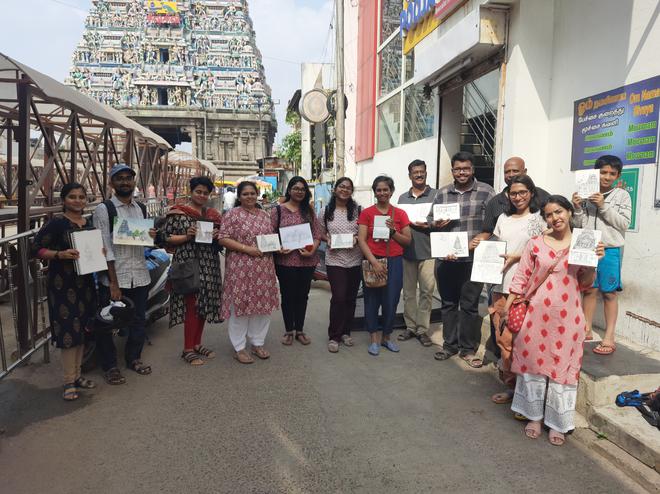
Started by Mohan Krishnan, a documentary maker, in 2020, the Chennai chapter is the latest to be recognised (on Monday July 17) as an official regional chapter of the international USk community. Although the pandemic played spoilsport, once restrictions on social interactions were lifted, the USk Chennai has been meeting fortnightly, on Sundays, to sketch vantage points, landmarks and heritage structures in Chennai.
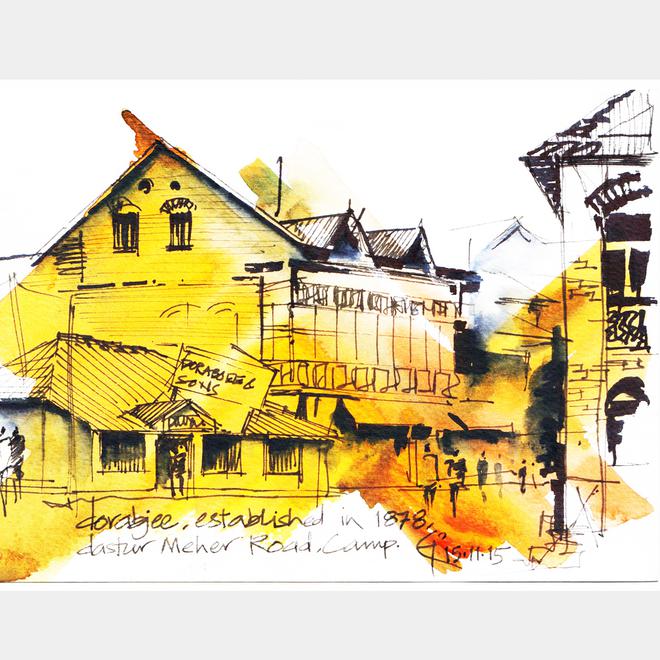
The chapter is part of a global network of Urban Sketchers headquartered in Seattle, US. The first Indian chapter was started in Pune in 2015 by architect and art enthusiast Sanjeev Joshi. He happened to attend a symposium in Singapore as an instructor.
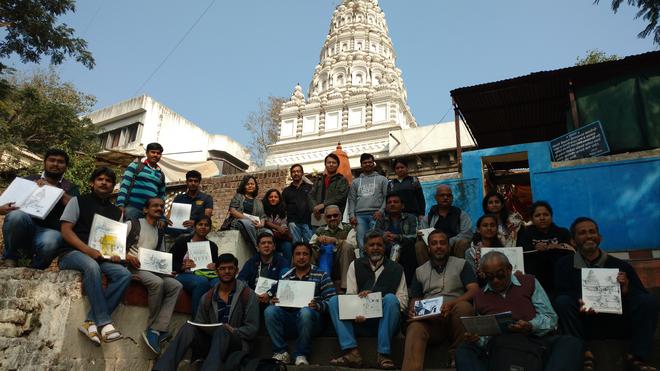
“I enjoyed the synergy of sketching as a group. I learned how I could start a chapter in India and began one in Pune,” says Sanjeev. At present, the Pune chapter is one of the biggest in India with 2,000-plus members on their facebook page. About 90 to 100 people attend the weekly sessions on Sundays.

The second was begun in Goa in 2017 by Darpana Athale, an architect who was part of USk Pune. The chapters have grown organically across India. Every chapter has three administrators who coordinate the working of that chapter.
Architect S Jayakrishnan, founder of USk Thiruvananthapuram, says that initially, the group was confined to Europe and North America. “Singapore was the first venue of USk in Asia. The next was at Bangkok. There, we decided to have a Asian Sketchlink for the continent. The next meet will be at Suooon, Korea in September-October,” he says.
Calling artists
Going by the enthusiastic response to urban sketching, an all-India sketchers’ exhibition was held in Pune in December 2022. It was also decided to have a regional coordinator for India and hold an annual exhibition for India.
At present, there are 12 active chapters in India, in addition to a few such as Chennai, Belgaum and Kochi, which were recognised on July 17 as part of the international community. “There are 15 to 20 new groups that have been conducting sketch meets consistently in places such as Simla and Varanasi,” says Darpana, regional coordinator of the USk chapters in India. A group has to sketch consistently for six months to become a part of Urban Sketchers International. It is all voluntary and there is no rigid hierarchy.

Darpana explains that the Urban Sketchers aim at documenting their cities, space, heritage, food, culture, traditions and events. She is now the regional coordinator of the USk in India.
The first chapter
Founded by journalist Gabriel campanario in Seattle in the US in 2007, Urban Sketchers (USk) quickly became a world-wide group with more than 60,000 people from all walks of life. They create in situ drawings of places they visit. At present, there are 400-plus chapters worldwide. Their motto is ‘We show the world, one drawing at a time!”
In India, the first chapter of Urban Sketchers began in Pune in 2015. It is one of the biggest chapters in India with more than 2,000 members.
Urban Sketchers Goa was the next one. It is the only one which is called by the name of the State. All the other chapters are known by the places they are located in such as Urban Sketchers Chennai, Bengaluru, Kolkata, Delhi, Jaipur, Thiruvananthapuram, Thrissur and so on.
According to Namita, the sketchers do urban reportage. “We try to bring to life what we see around us and we only do live sketches on location. In Chennai, for instance, we have covered the Central Railway Station, the museum, Chetpet Eco Park… We are planning to seek permission to sketch the premises of the Madras Literary Society and also go to Paris corner for one of our sketch walks.”
The artists sketch in situ for a fixed duration of time, which varies from 90 minutes to two-and-a-half hours. At the end of it, they come together to display their works and get-together for a peer review wherein inputs are given, there is a give- and-take of ideas and suggestions. Each meet is documented and shared on social media handles of individual chapters.
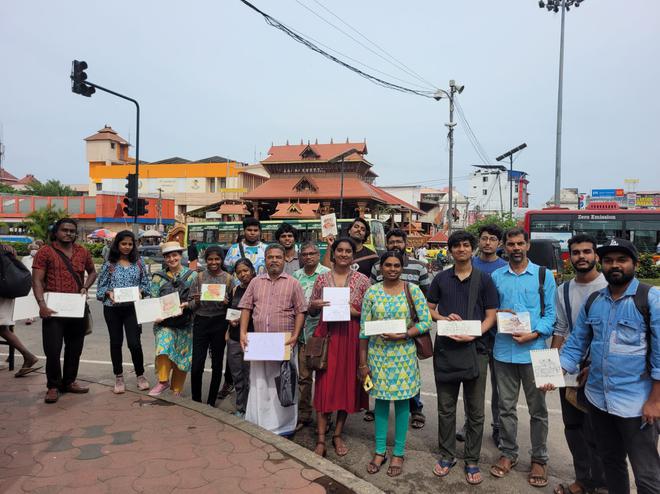
“We love sketching; there are no formal rules for admission to the group or membership fee. All you have to do is join us on our meet-ups and sketch. The venue and timing are announced on our social media handles,” says Rohit Kulkarni, who started the Bengaluru chapter in August, 2016. They sketch “places, buildings and people that convey the essence of Bengaluru”. Keeping in mind Bengaluru’s long hours of commute, the chapter encourages its members to host sketchmeets in their locality. The Bengaluru chapter was recognised in 2018.

Even the lockdown, which hit many of the Indian groups, did not stop the chapters in places like Bengaluru and Delhi. Niraj Gupta, founder of the Delhi USk, says they turned to Whatsapp to keep their members motivated through that period. “We would suggest themes such as the view outside your window, your book shelf, the food on the table… The strength of USk is group sketching live. We had to make exceptions during the lockdown.”
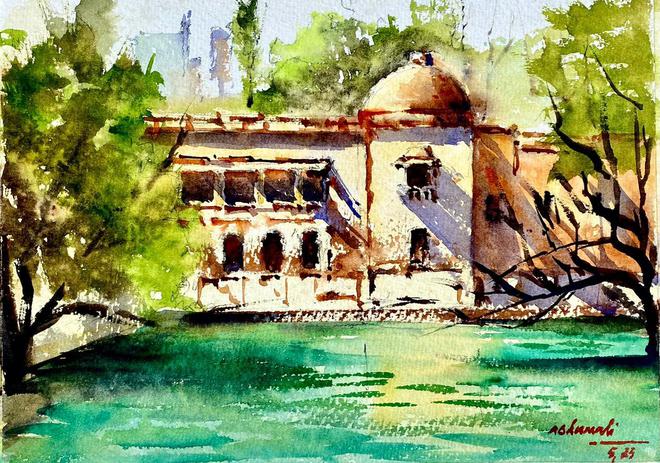
Sanjeev points out that while sketching is a kind of mediation for him, it is also about capturing ephemeral scenes of the city that may not be there tomorrow. “Every city has a constantly changing landscape, it is never the same. What was 20 years ago is not there now. We try to document the urban landscape as we see it and not compose something from our imagination.”
There is no specific media; it could be pen and paper, water colour, pastels, oils, pencil on paper… Farah Irani, a set designer from Pune, underlines that there are no requirements on how to draw and what to draw. “This is about storytelling about your city and how you can share what is happening around you. We don’t want professional work. People can come and draw.”
She adds that because “we see work in so many different styles, media and so on, aspiring artists realise that the possibility of capturing the same place or building in so many different ways.”
As Namita puts it: “At the end of every meet, our photographs are a kaliedoscope of different media and styles. Each person’s perception of what they see and what they bring on paper is so different. It is never the same; what we have chosen to capture and what we have chosen to leave out is never the same.”
Some chapters, like the one in Pune, conduct master classes every two months. Farah is a qualified workshop instructor. “USk has a committee and we have workshops registered with them. We have guidelines to follow those to get the workshop registered with the international community of urban sketchers. At present, I am the only instructor registered with the Seattle group,” explains Farah, who will soon be travelling to Korea for a session.

Many chapters have inhouse experts, as Ishak Ziaee, founder of USk Hyderabad, points out. Their expertise is open to all members in the group and that is one of the strengths of the group activity.
Each chapter has a distinctive identity depending on the place and interests of the members.
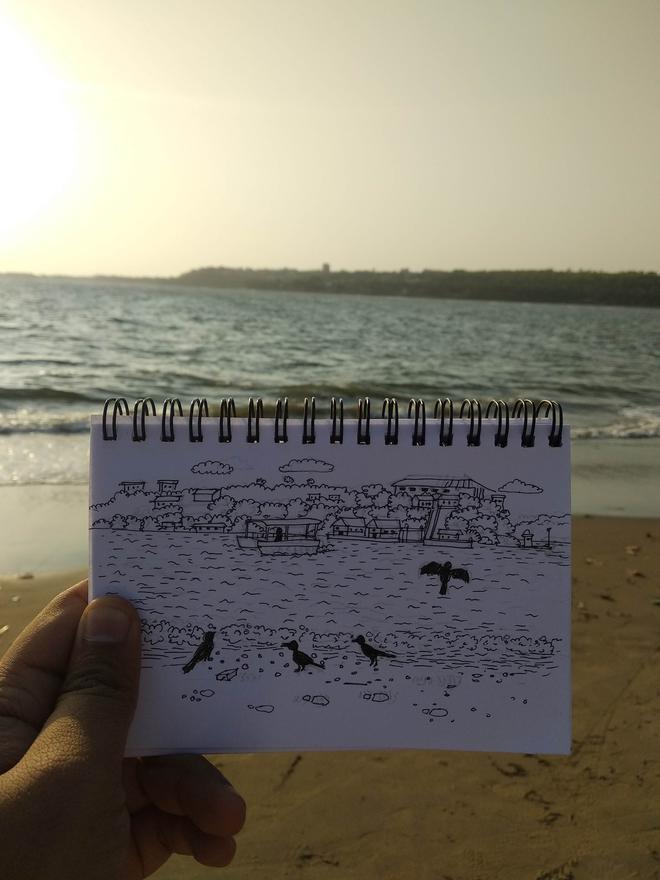
In Goa, the Urban Sketchers came together in May to raise awareness to save the River Mhadei. The SketchforMhadei meet turned to art to help bring people to protect the environment and their heritage. They sold 3,000 sketches to raise money for those hit by floods.
USk Hyderabad, which meets monthly on a Sunday, organises collaborations with foodies, heritage enthusiasts, at cafes, gated communities and so on. Ishak, a techie, talks about one they did with a group called Diehard Foodies at a café, which was a huge success in terms of participation.
“We did one at Charminar with a heritage walk group, and another one with a tea tasting event at a private company. We went to the factory and sketched there. Then there was one we did with members of Photowalk. It also helps in spreading the word about Urban Sketchers,” he says.
In June, the USk Thiruvananthapuram had held an exhibition at Alliance Francaise de Trivandrum and two of their members, Jini Jose and Harikumar RS, had conducted workshops, says Riya Zachariah, a banker-turned-techie and a sketching enthusiast.
The USk in Delhi, begun in May 2017, has held six theme-based exhibitions such as ‘Forts of Delhi’, ‘Tombs of Delhi’, ‘Lutyens Delhi’….Niraj says it is a fantastic way to go out and acquaint yourself with the city and her people.

The chapter in Kolkata, started a year ago on the initiative of Asad Karim, an aeronautical engineer, has been discovering the city through their sketch meets. He says getting permission to sketch in museums and heritage government building takes time but the group has been actively documenting the city’s park, lakes, churches and colonial structures.
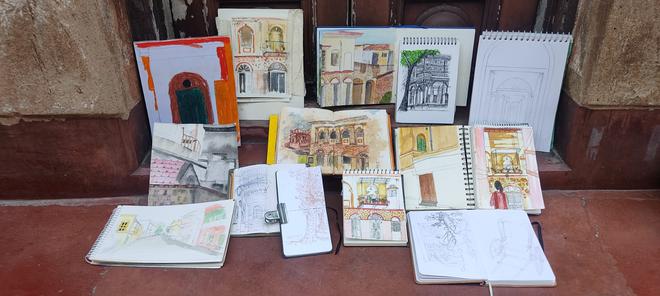
“In keeping with the weather, we shift our timing. In the rainy season, we try to start early while in summer, we try to do it in the evening to beat the heat,” he says. In spite of the busy schedules of the members, they make it a point to meet up for sketching.
Darpana says that when people see the group sketching, they encourage onlookers to join them to sketch. “There is no comparison or competition. It is an activity that all of us can enjoy. It is to bring out the story-teller in each of us,” says Darpana.







